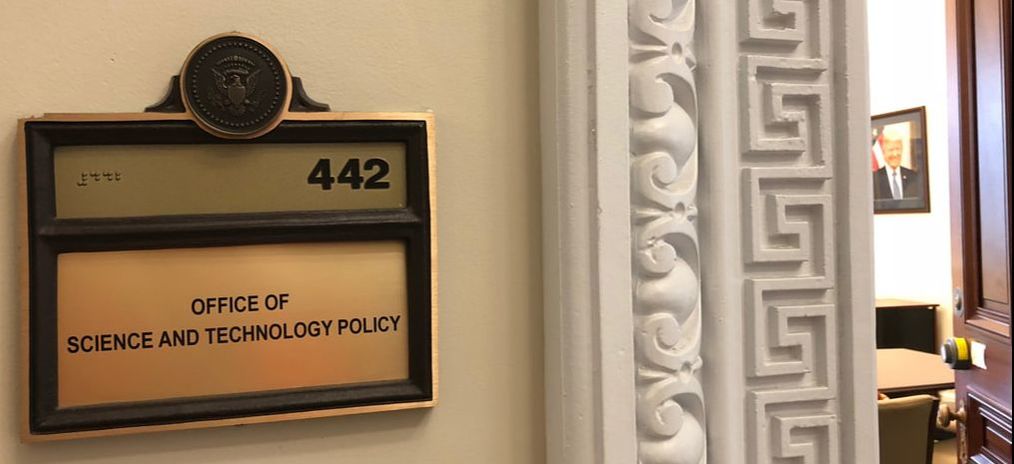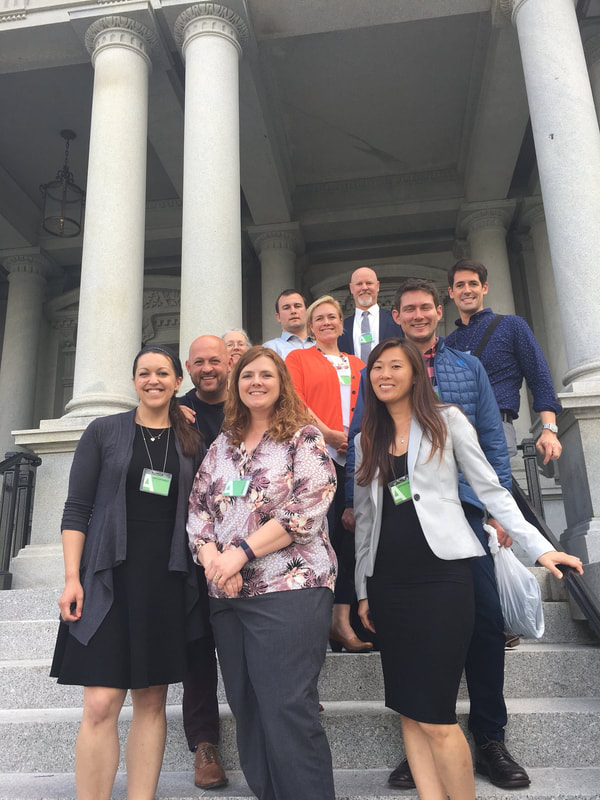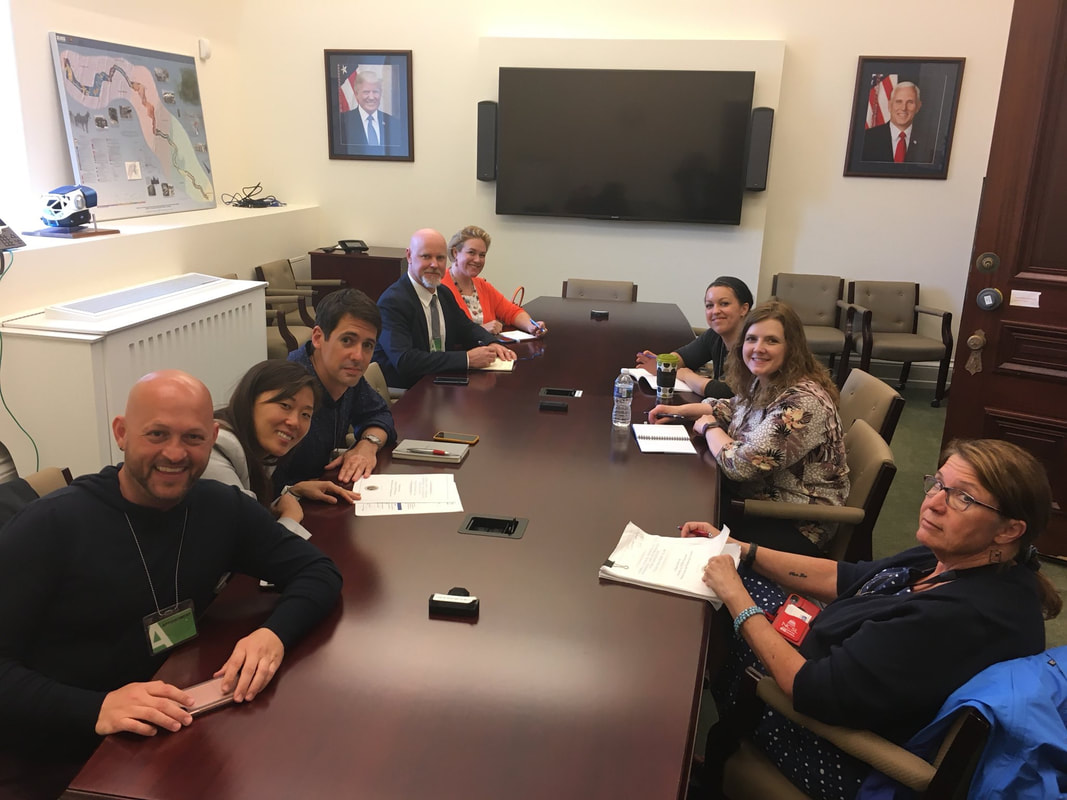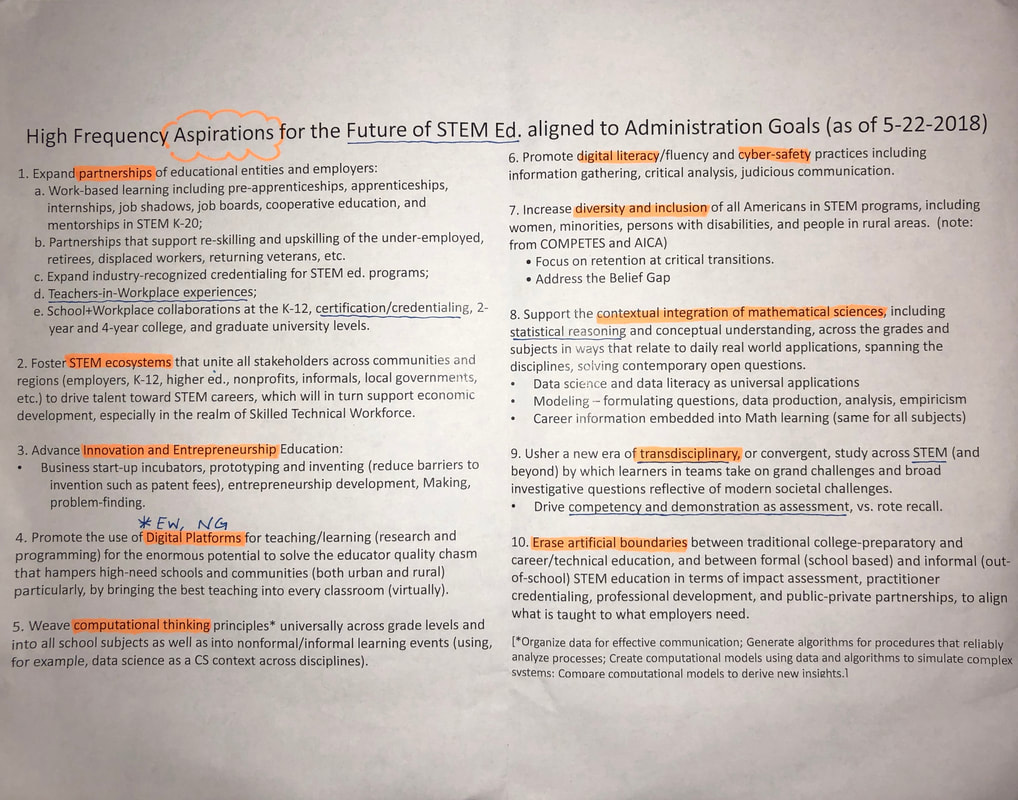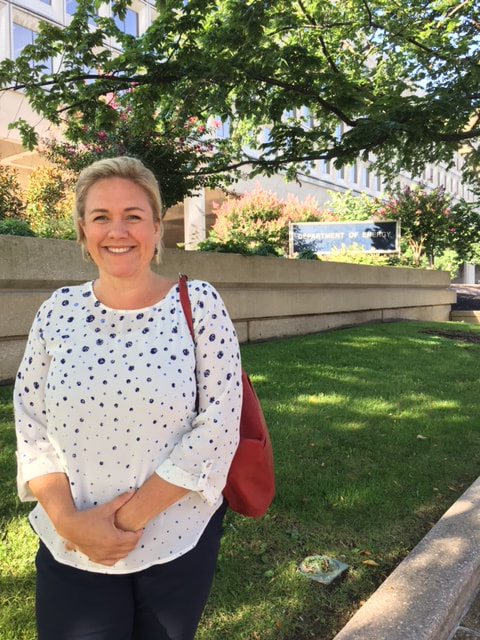|
This past week the Einstein Fellows went to the Eisenhower Executive Office Building next to the White House to meet with Dr. Jeff Weld. Dr. Weld is serving as Senior Policy Advisor in STEM Education for the White House Office of Science and Technology Policy. He is tasked with writing an assessment of the STEM education 5-year strategic plan that was authored by the the Committee on Science, Technology, Engineering and Math Education (CoSTEM). CoSTEM was established by the Obama administration in 2011 with, as outlined in the Charter of the Committee, the purpose of coordinating Federal programs and activities in support of STEM education. The five year plan created in 2013 and focused on the following STEM education priorities:
In addition to evaluating the Obama administration 5-year STEM education plan, Dr. Weld will facilitate the authoring of the next STEM education 5-year plan (2018-2013). That's where the Einstein Fellows came in; we were asked, "What new emergent stem priorities should be in the plan?" I certainly recognize that we are just a piece of the "input pie," however a group of highly informed, educated and respected STEM educators might be just the people to ask this question and actually listen to and incorporate our responses. Honestly, I am not sure if that happened... but time will tell. At least we had a seat at the table ("If you're not at the table, you're on the menu..."). Our discussion focused on the “High Frequency Aspirations for STEM Education Aligned to Administration Goals.” This was a DRAFT list of the ten STEM education priorities that are bubbling to the surface as being goals of the Trump administration STEM Ed 5-year plan. I'm just going to say it here: these priorities do not fully align with what I view as most important in STEM education. That doesn't mean they aren't good, worthwhile goals - it's just not what I would prioritize if I was the boss. But, I digress... (priorities tend to shift based on political affiliation). The group of Einstein Fellows immediately noted that there is no mention of STEM teacher recruitment or retention in the DRAFT plan, which is interesting since that was the #1 priority from the previous plan. There is mention of ensuring access to high quality educators through digital platforms (like watching teachers remotely on a screen, Khan Academy type videos were mentioned in the discussion) ...but really?! A digital teacher shouldn't be the ASPIRATION. The aspiration should be an excellent, high quality STEM educator providing context relevant instruction while building meaningful, impactful relationships with students. Given that the Aspirations for STEM education needed to be aligned with administration goals, I was curious as to exactly what those goals actually are. From what is presented on the the White House Office of Science and Technology Policy website, the Trump administration prioritizes "American Military Superiority”, “American Security,” “American Prosperity,” “American Energy Dominance,” and “American Health." There is also a theme of increased reliance on the private sector to fund research, development and commercialization of technologies in the prioritized fields. These priorities are intended to receive special focus in agency budget requests and as WH initiatives. The Trump administration states that it will continue the federal government's commitment to STEM education and apprenticeship programs. In fact, the R&D priorities memo (August 2017) states, “Emerging technologies will present tremendous opportunities for new job creation, but will also require a technically skilled and capable workforce to meet demand. In order to maintain American competitiveness and help ensure that the domestic workforce is available and qualified for the jobs of the future, agencies should incorporate STEM education, including computer science education, and workforce training opportunities into their programs. Agencies should give priority to policies and actions that place an emphasis on expanding the STEM workforce to include all Americans, for both urban and rural, and including women and other underrepresented groups in STEM fields. In order to track improvements in these areas, agencies should develop quantitative methods or metrics and collect data to analyze the effectiveness of the STEM programs.” Of interesting note is the focus on learning STEM for workforce development purposes only. The "High Frequency Aspirations" document made no mention of learning for curiosity, knowledge of societal issues or for the importance of an informed electorate. Again, perhaps a party line division here, but I strongly believe that public education does not have the sole function of workforce development. Yes, workforce development is important and is a consequence of high quality STEM education, however I personally think the primary focus of education should be sustainment of a democracy with informed, educated citizens. I definitely learned a lot at our two hour meeting at OSTP and I hope that the cynicism I felt as I left the meeting is proven to be misplaced and undeserved. I am thankful for the Einstein Fellowship and the opportunity to add depth to my understanding of the complexities of federal STEM education initiatives and priorities.
|
Archives
July 2018
|
I give many of my IB Biology resources away, for the benefit of students and teachers around the world.
If you've found the materials helpful, please consider making a contribution of any amount
to this Earthwatch Expedition Fund.
Did I forget something? Know of a mistake? Have a suggestion? Let me know by emailing me here.
Before using any of the files available on this site,
please familiarize yourself with the Creative Commons Attribution License.
It prohibits the use of any material on this site for commercial purposes of any kind.
If you've found the materials helpful, please consider making a contribution of any amount
to this Earthwatch Expedition Fund.
Did I forget something? Know of a mistake? Have a suggestion? Let me know by emailing me here.
Before using any of the files available on this site,
please familiarize yourself with the Creative Commons Attribution License.
It prohibits the use of any material on this site for commercial purposes of any kind.
